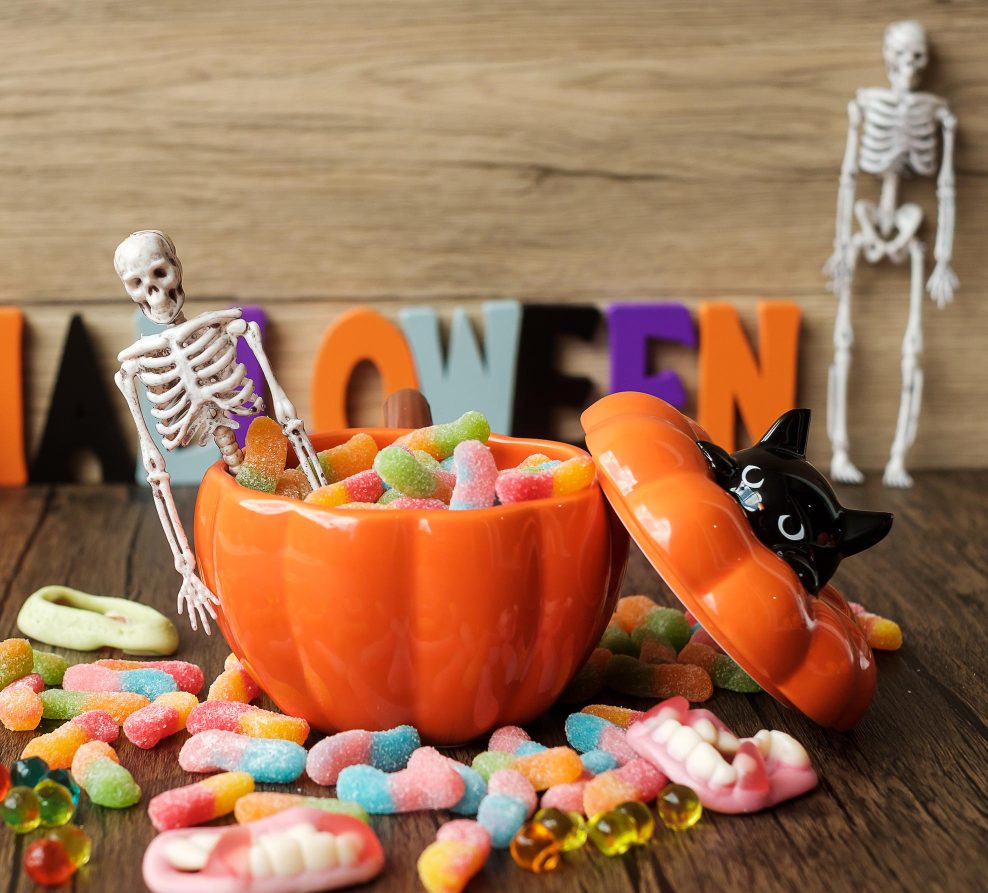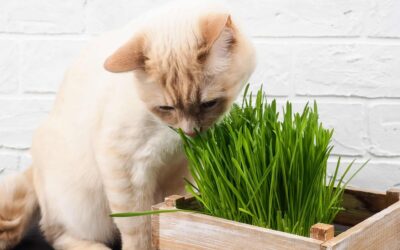Most Toxic Halloween Candies for Dogs [+ Safety Tips]

The excitement of trick-or-treating and Halloween candy can lead to dogs getting into things they shouldn’t. We all know how dogs are—they’ll eat just about anything out of sheer curiosity. Some candies, however, pose serious health risks, ranging from mild digestive upset to severe poisoning, which can even be fatal.
Typical Halloween Candies That Are Dangerous For Dogs
Halloween candies delight kids and adults, but many contain harmful ingredients for our pets. Here are some of the most common Halloween candies that pose a danger to dogs:
- Chocolate: Chocolate is one of the most well-known dangers for dogs, as It contains theobromine and caffeine, which can be toxic. Chocolate can cause vomiting, diarrhea, hyperactivity, an abnormal heart rhythm, and, in the most severe cases, can cause seizures and even death.
- Raisins and grapes: Although not candy, raisins and grapes are often found in trail mixes and other Halloween treats. Even in small amounts, raisins an grapes can still cause kidney failure in dogs.
- Candies with artificial sweeteners, such as Xylitol, sorbitol, and mannitol, can harm dogs. They may be found in many sugar-free candies, gums, and baked goods. It can cause a rapid drop in dogs’ blood sugar, which may lead to weakness, seizures, and life-threatening liver damage.
- Candy with nuts or nut butter may be hard for dogs to process and may induce pancreatitis, a life-threatening condition.
- Candy with macadamia nuts can cause weakness, vomiting, tremors, and hyperthermia.
- Candy with alcohol or caffeine can cause restlessness, a fast heart rate, and sometimes seizures.
- Spicy or savory candies can upset dogs’ stomachs.
What About Candy that Is Made of Sugar, Artificial Color, and Flavors?
Many Halloween candies are primarily made of sugar, artificial colors, and flavors (i.e. Skittles and candy corn). While these ingredients are not necessarily harmful in small amounts, they can lead to digestive problems, weight gain, and other health issues if consumed in large quantities. For this reason, it is not recommended that dogs eat these candies.
Additionally, many common types of Halloween candy are made from gelatin (Swedish Fish), which comes from animal by-products. Some dogs may struggle to digest gelatin, which can cause stomach upset or allergic reactions.
Halloween Safety Tips For Pet Owners
Here are some tips to keep your dog safe during the spooky season:
- Keep candy out of reach. Store all Halloween candy in secure, dog-proof containers or cabinets.
- Supervise your dog during festivities. Watch them during trick-or-treating or Halloween parties to prevent them from eating dropped candy or other harmful things.
- Give appropriate treats. Secure the trash. Dispose of all candy wrappers and leftovers in a dog-proof trash can.
- Identify potential hazards. Be aware of Halloween decorations that could harm your dog, such as glow sticks, candles, and minor choking hazards.
- Update your dog’s ID. Ensure your dog wears a fitted collar with up-to-date ID tags if they escape during Halloween.
- Provide a safe space: Create a quiet, secure spot for your dog to retreat if they get anxious during Halloween.
Signs Of Candy Poisoning In Dogs
If you suspect your dog has consumed Halloween candy, you should seek veterinary advice immediately. Don’t wait for clinical signs to appear, as waiting can allow toxins to be absorbed, making treatment more complex and potentially expensive.
Here are some common signs of candy poisoning in dogs to be aware of:
- Vomiting: A common sign of candy poisoning, it can mean an upset stomach or severe toxicity.
- Diarrhea: Loose or bloody stools may indicate gastrointestinal distress from harmful substances.
- Extreme Lethargy: Toxins can make your dog lethargic, weak, or uncoordinated.
- Increased thirst or urination: Some toxins can harm the kidneys and cause increased thirst and urination.
- Seizures: In severe cases, toxins can cause tremors, seizures, or loss of consciousness.
- Rapid breathing or heart rate: Some toxins can harm the cardiovascular system, causing abnormal breathing or heart rates.
How Can Pet Insurance Help You if Your Dog Needs a Treatment During Halloween?
Pet insurance can be a valuable tool in managing the costs of treating a dog’s veterinary expenses. By having a pet insurance policy in place, you can have peace of mind knowing that you can provide medical care for your furry companion without worrying about the financial burden. Pet insurance can help cover the costs of veterinary consultations, diagnostic tests, medications, and even specialized treatments if required.
Reimbursement
This method is the most common for pet insurance companies. You pay out of pocket for the veterinarian bill, and then the insurance company reimburses you for what’s covered under the insurance plan. The steps look like this.
- You pay the vet bill after your dog’s visit.
- You fill out the pet insurance claim form.
- Submit the claim form and other required documentation to the insurer.
- After the claim is approved, you will be reimbursed for eligible expenses.
What Does Odie Pet Insurance Cover?
Pet insurance covers various veterinary expenses, providing financial protection and peace of mind for pet owners. Here are the details of the coverage options offered by Odie Pet Insurance:
Illness & Injury Plan
The Illness & Injury Plan is an all-inclusive insurance plan designed to cover a wide range of medical needs for your pet. This plan includes comprehensive coverage for various illnesses, injuries, and veterinary services. Some of the covered items include:
- Veterinary exams and consultations
- Diagnostics (e.g., X-rays, lab tests)
- Prescribed medications
- Surgeries and hospitalization
- Rehabilitation, acupuncture, or chiropractic treatments
- Medically necessary supplies
- Euthanasia and cremation
The Wellness Plan
The Wellness Plan is a monthly membership that focuses on preventive care and covers routine veterinary services.
- Provides reimbursements for routine care items such as wellness visits (exams and vaccines), testing and parasite prevention, dental cleanings and at-home dental care, vitamins, supplements, and more.
- Through Odie’s partnership with Petivity, a leader in smart pet products and proactive care, Wellness Plan members can also receive reimbursements for Petivity devices and health kits, as well as eligible Purina food and supplements.
- Total reimbursement up to $700 per year.




